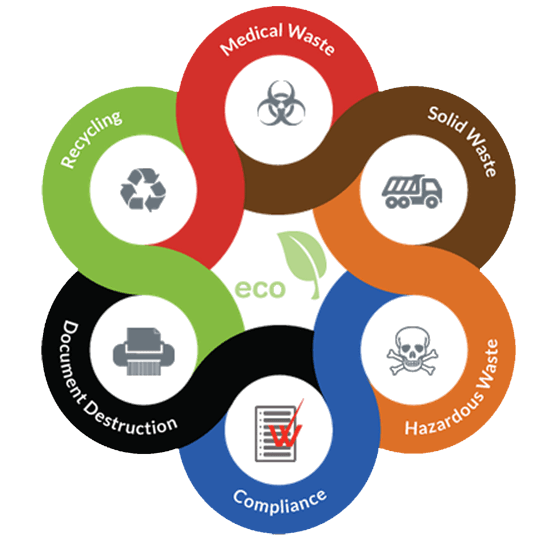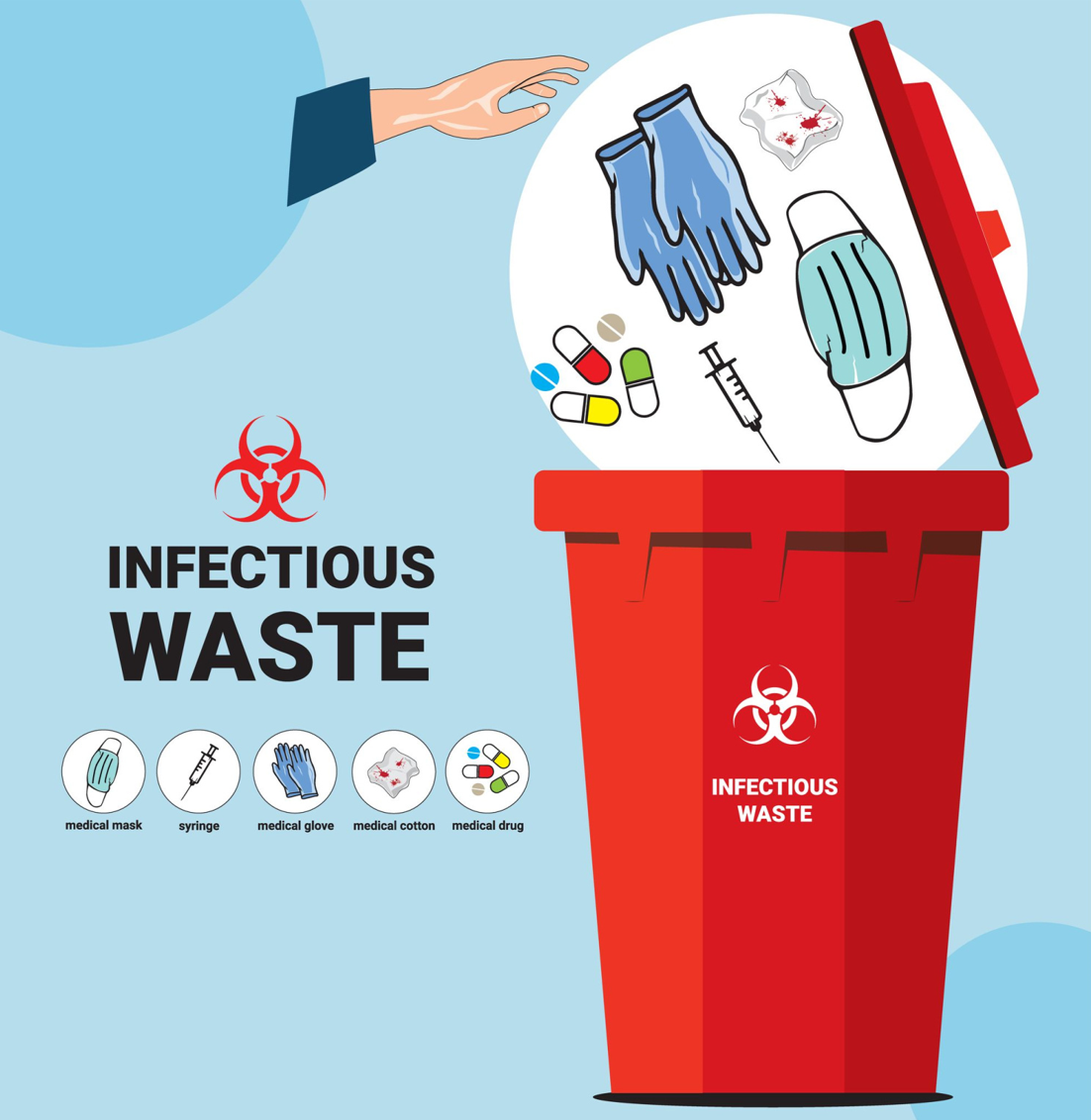Reliable Techniques of Medical Waste Disposal
Efficient techniques of medical waste disposal are vital in maintaining public health and wellness and ecological safety. Clinical waste, consisting of sharps, pathological waste, and pharmaceutical waste, must be dealt with and dealt with correctly to stop the spread of infections and shield the environment. This needs adherence to stringent laws and the execution of professional waste management practices.
Proper segregation of medical waste, safe and protected storage, reliable treatment and sanitation approaches, and environmentally-friendly disposal alternatives are vital parts of a reliable medical waste disposal system. Expert waste administration services play an important function in guaranteeing conformity with laws and reducing the risks linked with inappropriate disposal. By utilizing these methods, healthcare centers can add to a safer and cleaner environment while protecting the well-being of the area.
Correct Segregation of Medical Waste
Correct partition of clinical waste is necessary for making sure the reliable and risk-free disposal of these potentially dangerous products. Medical waste refers to any kind of waste produced throughout health care activities, such as hospitals, facilities, labs, and study centers. It consists of a vast variety of materials, such as made use of needles, syringes, polluted dressings, expired or extra medicines, and biological materials.
By setting apart medical waste, medical care facilities can lessen the danger of infections, injuries, and environmental contamination. The procedure includes classifying waste into various types, such as sharps, transmittable waste, pharmaceutical waste, and non-hazardous waste. Each type needs particular handling, product packaging, and disposal methods to avoid exposure to health care workers, waste monitoring workers, and the basic public.
To make sure appropriate segregation, health care facilities must develop clear standards and supply adequate training to team member. This consists of educating staff members on the different waste classifications, correct packaging methods, and making use of suitable containers - WasteX Medical Waste Disposal. Furthermore, clear signs and color-coding systems can be implemented to assist in the recognition and partition of different waste kinds
Safe and Secure Storage Space of Medical Waste
Safe and safe and secure storage of clinical waste is essential for maintaining the honesty and containment of possibly hazardous products. Correct storage space not just secures health care employees and the public from exposure to hazardous compounds yet additionally stops environmental contamination.
To guarantee safe storage space, clinical facilities ought to follow certain standards. Waste should be stored in puncture-resistant and watertight containers that are classified suitably. These containers must be firmly sealed to avoid any leak or spills. In addition, the storage area should be inaccessible and safe and secure to unapproved workers, lessening the danger of unexpected direct exposure.
Appropriate segregation of clinical waste is likewise vital for risk-free storage space. Different kinds of waste, such as sharps, transmittable materials, and pharmaceutical waste, need to be separated to avoid cross-contamination. This segregation can be achieved with using color-coded containers or containers.
Regular tracking and evaluation of the storage space area are vital to recognize any prospective threats or breaches. This consists of checking for indications of damages or degeneration in the containers, ensuring appropriate air flow, and keeping an eye on temperature level and humidity levels.
Efficient Treatment and Sanitation Techniques

One generally made use of treatment method is autoclaving, which involves subjecting the waste to high-pressure vapor at temperature levels over 121 degrees Celsius. Another approach is incineration, which involves shedding the waste at high temperature levels.
Chemical sanitation is another effective technique for dealing with medical waste. This method involves using disinfectants such as chlorine substances, phenolic substances, or hydrogen peroxide to eliminate or suspend microorganisms (WasteX Medical Waste Disposal). Chemical disinfection is commonly used for fluid waste, such as laboratory examples or physical fluids
Over the last few years, alternate treatment techniques such as microwave disinfection, irradiation, and biological therapy have also Look At This obtained interest. These approaches provide benefits such as decreased ecological effect and power consumption compared to typical techniques.
Environmentally-friendly Disposal Options
In the realm of medical garbage disposal, thinking about environmentally-friendly alternatives is critical. Health care centers generate a significant amount of waste, consisting of contagious products, pharmaceuticals, and chemicals, which can posture major threats to human health and wellness and the environment otherwise handled properly. There are a number of environmentally-friendly disposal options offered that can assist mitigate these dangers.
Recycling medical waste includes setting apart and processing certain materials for reuse or repurposing. Furthermore, some healthcare centers have carried out recycling programs for particular clinical devices or devices, additional decreasing waste generation.
This method includes converting medical waste into power via procedures like incineration or anaerobic digestion. Anaerobic digestion, on the other hand, breaks down natural waste in the absence of oxygen, producing biogas that can be made use of for power or warm generation.

Advantages of Expert Waste Monitoring Solutions
One significant advantage of expert waste monitoring services is the enhanced performance in dealing with and disposing of medical waste. Medical care facilities produce a significant quantity of waste that consists of unsafe products, such as sharp things, polluted things, and potentially transmittable waste. medical waste removal service. Inappropriate handling and disposal of medical waste present serious wellness risks to employees, clients, and the public. By utilizing expert waste monitoring solutions, healthcare facilities can make sure that all medical waste is managed and disposed of properly, minimizing the danger of contamination and the spread of diseases.
Professional waste administration solutions utilize qualified and skilled workers who are well-informed about the guidelines and standards for clinical waste disposal. They have access to customized tools and tools that enable them to manage various kinds of medical waste safely and efficiently. These services also have reputable procedures and methods in position to make sure that waste is set apart, packaged, moved, and disposed of in conformity with neighborhood, state, and federal policies.
Additionally, professional waste administration services can give healthcare centers with comprehensive waste management services. They can supply solutions such as waste collection, therapy, disposal, and transport, tailored to the particular needs and demands of the facility. This eliminates the problem of handling waste internally, permitting health care personnel to concentrate on providing quality patient treatment.
Conclusion
Finally, efficient methods of medical waste disposal include correct partition, safe storage, therapy and sanitation, and environmentally-friendly disposal options (WasteX Medical Waste Disposal). These approaches ensure the safe handling and administration of medical waste, avoiding the spread of infections and protecting the environment. Professional waste management services play an essential role in executing these techniques and guaranteeing conformity with laws. By following these techniques, healthcare facilities can contribute to a safer and much healthier atmosphere for both individuals and the area.
Medical waste, including sharps, pathological waste, and pharmaceutical waste, need to be taken care of and disposed of effectively to prevent the spread of infections and shield the setting.Appropriate partition of clinical waste, safe and safe and secure storage, reliable treatment and disinfection techniques, and environmentally-friendly disposal choices are vital elements of an efficient clinical waste disposal system. The process includes categorizing waste into different types, such as sharps, infectious waste, pharmaceutical waste, and non-hazardous waste. By utilizing expert waste administration services, medical care facilities can ensure that all clinical waste is managed and disposed of correctly, minimizing the threat of contamination and the spread of illness.
Specialist waste monitoring services employ knowledgeable and experienced personnel who are knowledgeable regarding the guidelines and standards for clinical waste disposal.